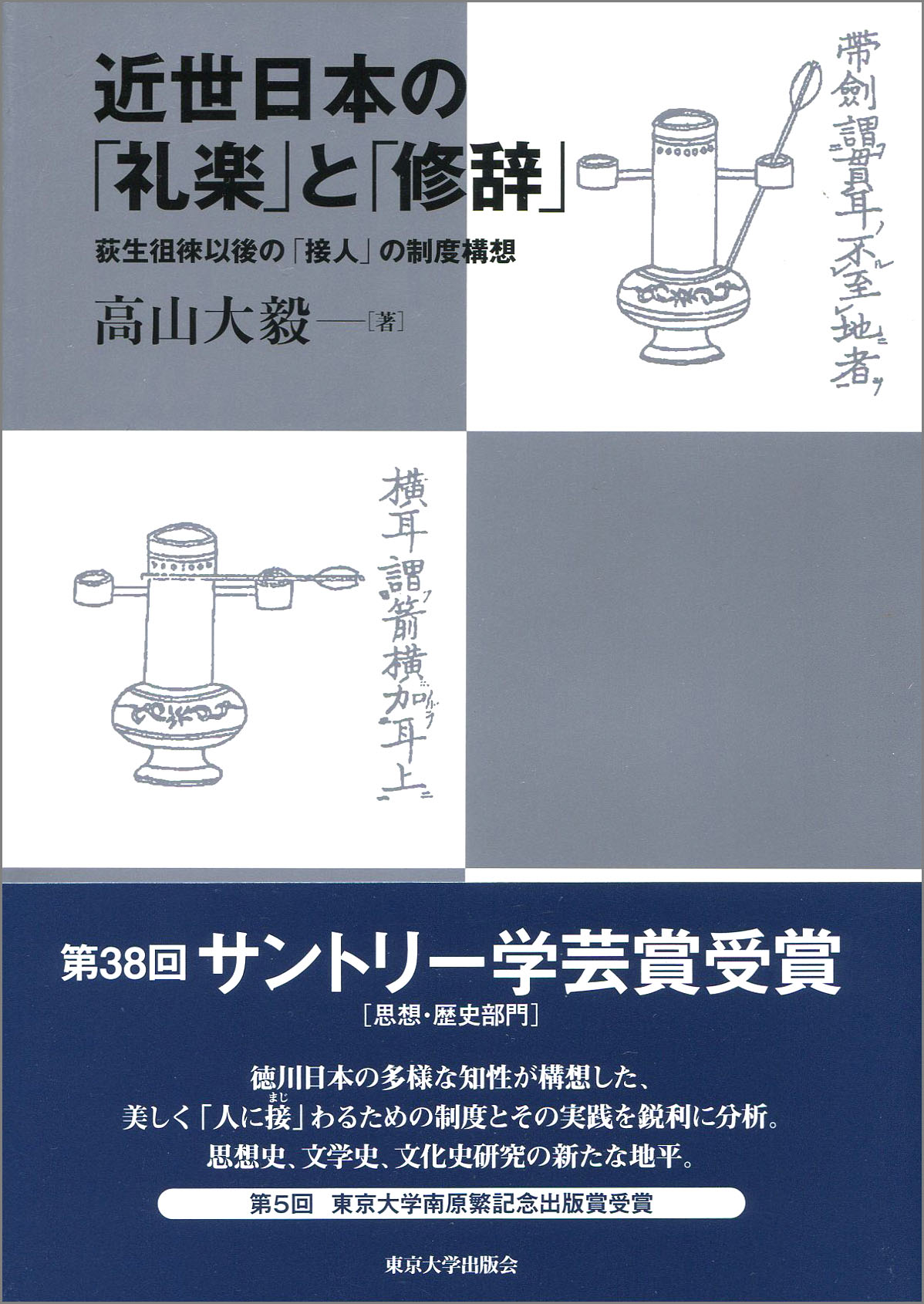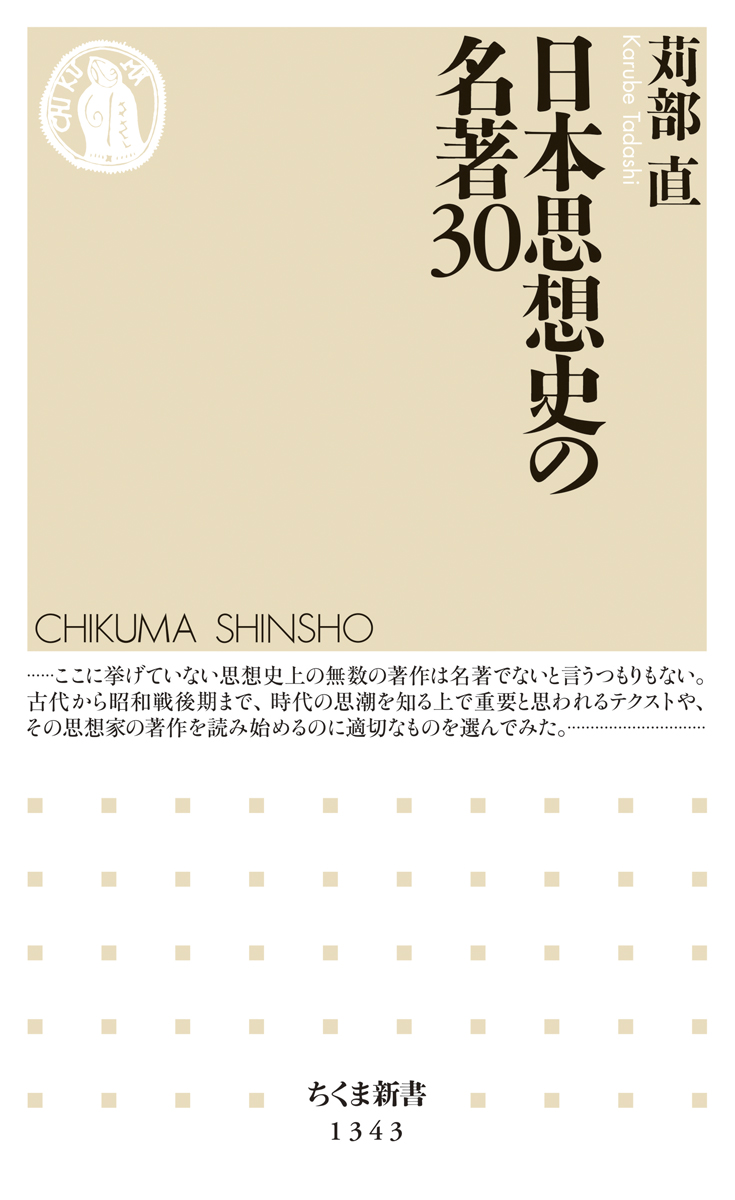
Title
Kinsei-Nihon no ‘Reigaku’ to ‘Shuji’ (Rite and Rhetoric after Sorai: An Intellectual History of Tokugawa Japan)
Size
416 pages, A5 format
Language
Japanese
Released
February 29, 2016
ISBN
978-4-13-036258-0
Published by
University of Tokyo Press
Book Info
See Book Availability at Library
Japanese Page
At the beginning of the century, as an undergraduate student, I thought that Nihonjin-ron and Nihonbunka-ron (discourse on the unique character of the Japanese people and of Japanese culture, respectively) would disappear before long. At the time, arguments built on a nation-state framework were being criticized in many university courses, and there was a great deal of discussion about the dangers of essentialist cultural theory. It was becoming the common-sense view that the Japanese people or Japanese culture should not be generalized, without special consideration of locality or era.
At present, recognition of this principle would appear to have established itself in the academic world. Nevertheless, when one looks at social media, one comes across crude and simplistic opinionated arguments about the Japanese people and Japanese culture, even among researchers with many papers to their name. There are also examples of people making even more general comparisons to point out shortcomings of the Japanese people or Japanese culture, without any solid basis, along the lines of “in the Western world . . . ” (or “in China . . . ”). Seeing such old-fashioned dichotomies, with Japan-Western world (or Japan-China), I cannot help but think that the prediction I made when I was younger was somewhat optimistic.
I occasionally wonder not only whether such terms have any valid meaning but, more importantly, whether reference to “the Japanese people” or to “Japanese culture” during discussion of political or social issues is effective in problem-solving. Arguments that Problem A is originated from a characteristic of the Japanese people (or Japanese culture), comes close to a fatalistic view that such a problem is insoluble insofar as the Japanese people (or Japanese culture) are concerned. Although, strictly speaking, it is possible to separate the two, many “Japanese people” sense the latter as implied within by former, which naturally leads to resistance. In the majority of cases it is possible to examine the world’s problems as examples of human foolishness, and to suggest countermeasures, without going out of our way to discuss “the Japanese people” and “Japanese culture” (in any case, the truth is that there are hardly any problems specific to “Japan,” similar examples will be found in other regions). Might this approach not allow one to obtain wider support, and avoid inviting useless opposition?
Theoretically questionable and probably also of no practical benefit, it is a hope of mine to reduce even slightly the use of these redundant terms “the Japanese people” and “Japanese culture” in discussion.
This book is tied closely to my views as given above. It deals with the course of discussions concerning human relations and social intercourse from the middle of the Edo period, beginning with Ogyū Sorai. Even taking trends in this single academic field as an example, there are many forms of discussion therein, and explaining them in a form that reduces them to a single “Japaneseness” only detracts from the appeal of individual ideas. Moreover, it seems to me that the range of these ideas extends not only to the present, but even to the future. There are many problems that could be more clearly understood if we referred to the opinions of Ogyū Sorai and Fujitani Mitsue instead of obsolete terms such as “the Japanese people” and “Japanese culture.” One of the aims for this book was to show the potential for early modern Japanese thought as a resource, having moved away from the concerns of Nihonjin-ron and Nihonbunka-ron.
As this book is based on an academic thesis, there are many references to resources, and some content that may be difficult for non-specialist readers to understand. However, if readers are willing to keep the author’s aforementioned intent in mind (it would not be problematic for readers to skip over more technical descriptions if necessary), I believe that this book is sure to deliver some intellectual surprises to many.
(Written by TAKAYAMA Daiki, Associate Professor, Graduate School of Arts and Sciences / 2019)



 Find a book
Find a book


 eBook
eBook